Menu
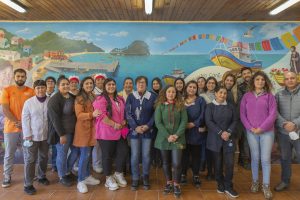
Here I would like to share some of the interdisciplinary collaborations that have woven into my life and artistic practices. The ongoing project “Tiempos de Muralismo” was born in the context of the Millennium Institute SECOS and has grown organically from the communities and territories where we work. I would also like to share some other past collaborations, including Proyecto Robsonella, Bienal Concepción, Arte & Ciencia, and ASKXXI. Each project has taught me about collaborative practices and enriched my life and experiences.
“Tiempos de Muralismo” “Bienal Concepción, Arte & Ciencia” “Proyecto Robsonella” “ASKXXI” Tiempos de Muralismo Bienal Concepción Proyecto Robsonella ASKXXI Tiempos de Muralismo
Tiempos de Muralismo is an arts + science project that, since 2019, has been weaving together artistic practices, scientific research, traditional wisdom, and the delicate threads of memory, emotion, and hope. It is a collective and co-creative attempt to reimagine knowledge and sustainable futures—through murals that become both mirrors and spaces to hold nourishing dialogues between diverse ways of knowing.
The project unfolds in elementary and technical high schools of six coastal villages in Chile where the Millennium Institute SECOS conducts research. These schools are the beating hearts of the communities of Chungungo, Tongoy, Coliumo, Tubul, Caleta El Manzano, and Hornopirén—villages that stretch across landscapes ranging from the desert of the north to the temperate rainforests and fjords of the south.
Our process is iterative, purposefully slow, and rooted in place. From the first hesitant conversations to the final brushstrokes of paint, we weave and cultivate relationships so that each mural emerges as an embodied witness of the knowledge, emotions, and memories that have breathed through the process—from the biodiversity of its territory, to scientific research, to lived stories. Students, teachers, fishermen and fisherwomen, seaweed gatherers, artists, and researchers stand side by side, shaping collective visions that ripple across community walls.

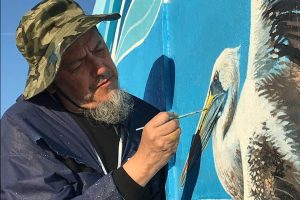
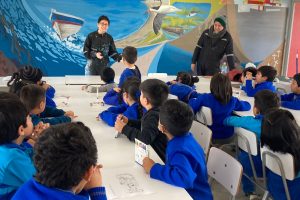
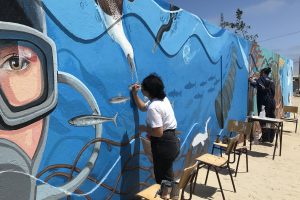
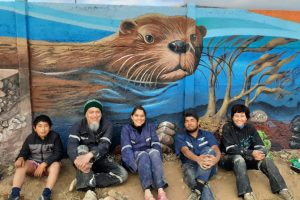
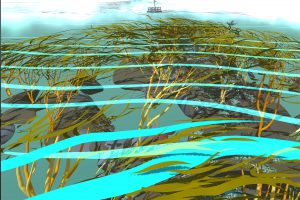
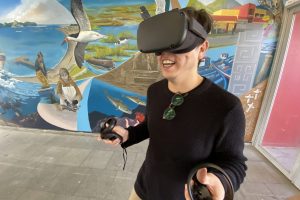
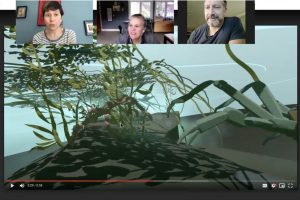
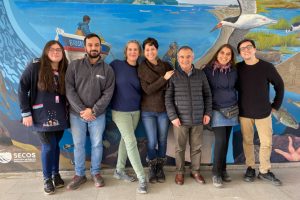
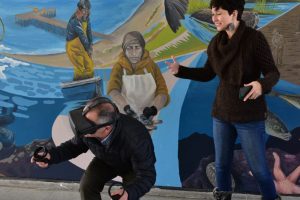
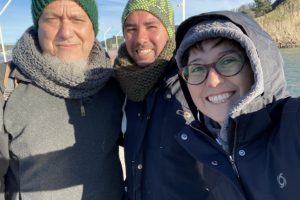
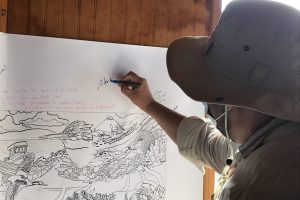
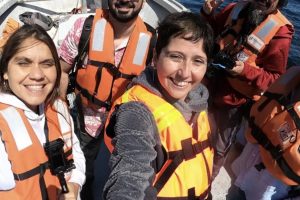
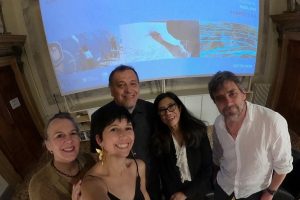
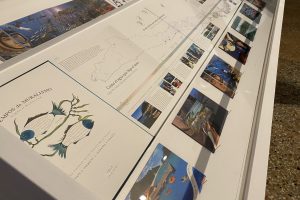
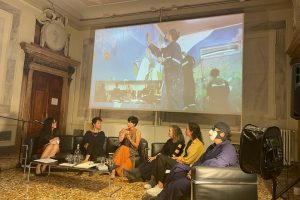
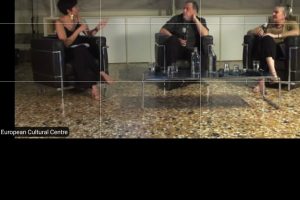
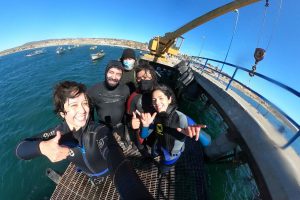
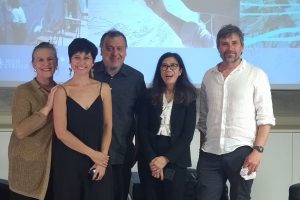
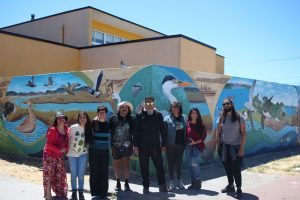
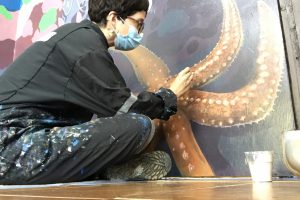
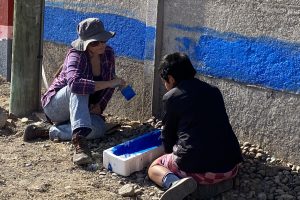
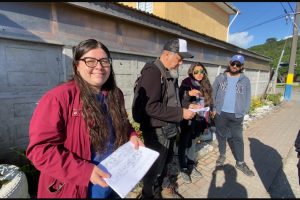
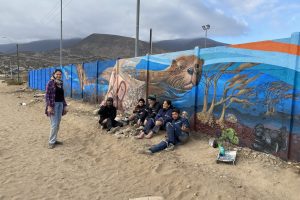
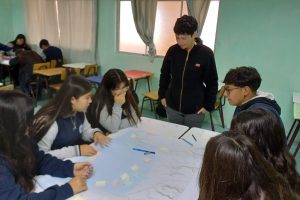
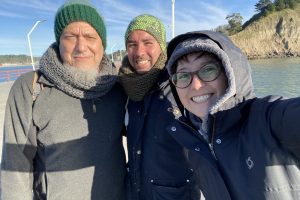
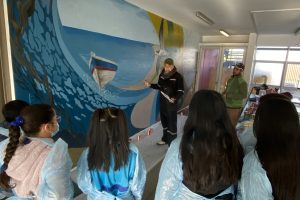
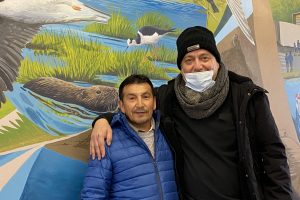
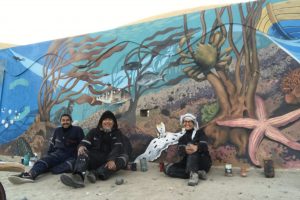
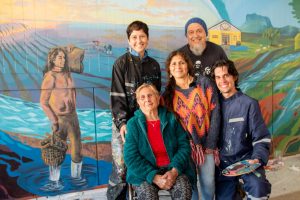
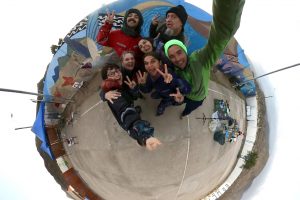
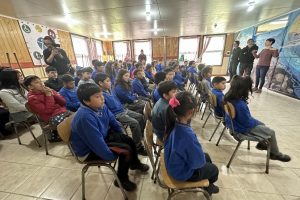
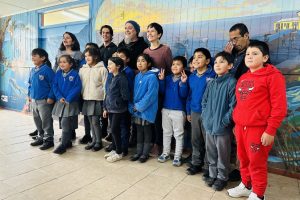
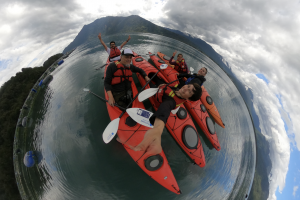
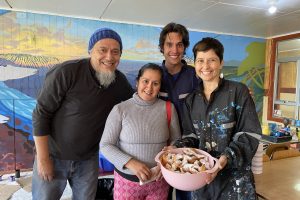
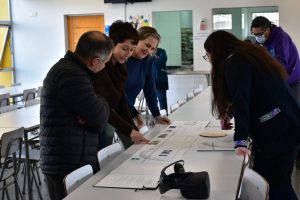
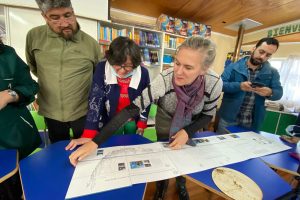
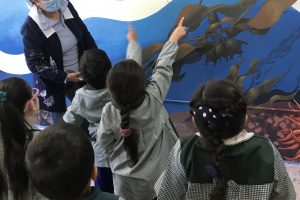
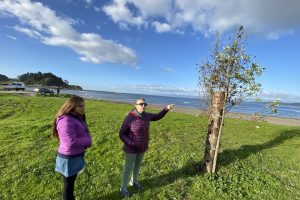
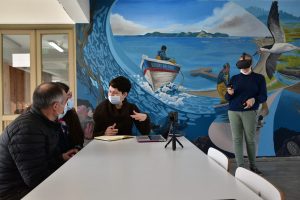
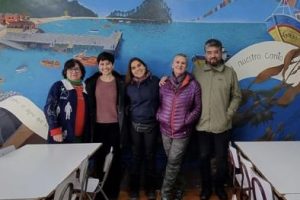
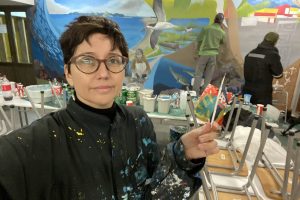
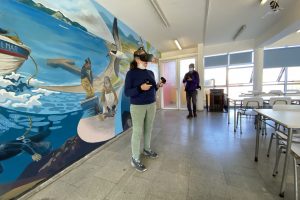
The journey began in 2019 in Tongoy, at Liceo Carmen Rodríguez, born from a community request to reimagine some of the arts + science activities I had designed. Together with muralist Alonso Salazar, interdisciplinary artist Genevieve Tremblay, and myself—then a researcher at the Millennium Nucleus MUSELS (today SECOS)—we created the first mural. When the pandemic arrived, halting our gatherings, the project responded by opening yet another door: experiments in virtual and augmented reality, keeping the thread of collaboration alive across distance and sparking multiple spin-off projects.
Over time, the circle of artists who have joined at different stages has widened, and I cannot but name them here with deep gratitude: Sol Pacheco, Renata Garretón, Nicolás Sáez, Marco Ammatelli, Andrea Pizarro, Paola Hernández, Felipe Portilla, Hernán Aguilera, Nathan DiPietro (VR mural artist), and Roberto Varas (photography and video). The project has also flourished thanks to the heart and dedication of teachers and community members, whom I would like to highlight: Escuela San Andrés de Chungungo (Claudio Zambra); Liceo Carmen Rodríguez of Tongoy (Macarena Contreras, Paula Díaz, Alexis Vallejos, and director Perla Araya); Escuela Caleta del Medio de Coliumo (director María Eliana Vega and Fabiola Fernández); Escuela Brisas del Mar de Tubul (teacher Jessenia Miño and fisherman Teodoro Leal); Escuela El Manzano (director Jacqueline Ribera, teacher Elisa Santander, and aquaculturists Maida Gueicha and Erasmo González); and Liceo Hornopirén (Rodrigo Castillo).
Finally, the project has also become a way to collaborate with other institutions, such as the Millennium Nucleus UPWELL, CEAZA, the Bienal Concepción Arte & Ciencia, Laboratorio del Antropoceno, and Quiero Mi Barrio Tubul.
A selection of press articles, catalog entries, and event documentation highlights the trajectory of Tiempos de Muralismo across different contexts of art, science, and community collaboration. From news coverage and interviews to academic collections and international exhibitions, these resources offer multiple entry points to explore the project’s processes and impacts. You can also visit the virtual gallery hosted on Artsteps to experience the works and stories online of the first period of the project: Artsteps – Tiempos de Muralismo

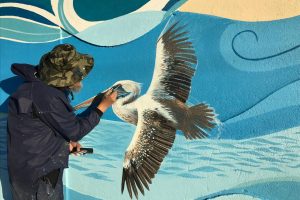

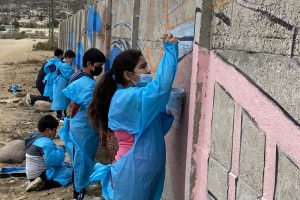


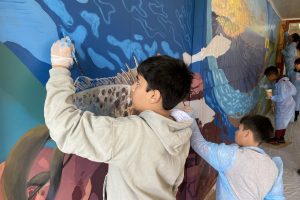


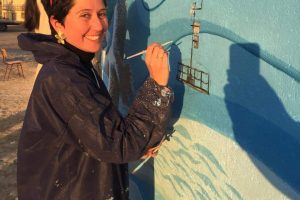

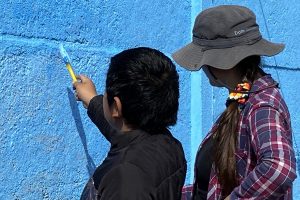
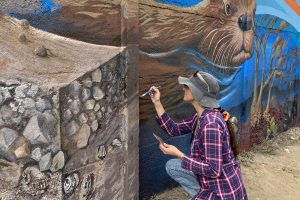

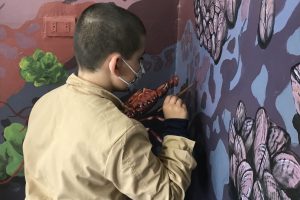
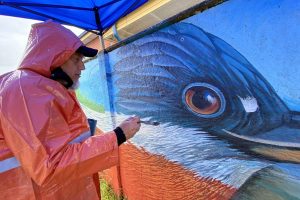

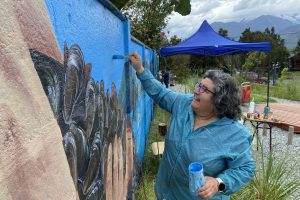
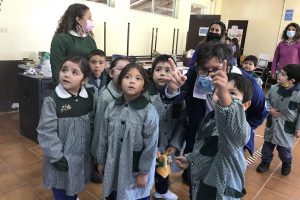
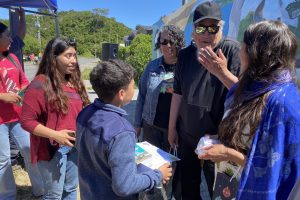
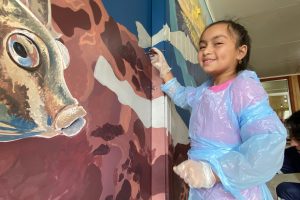
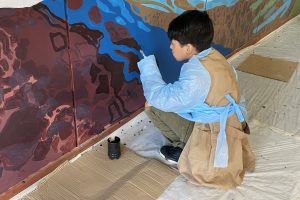
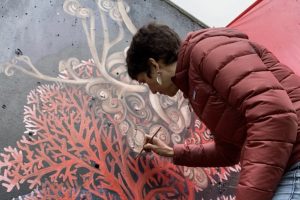
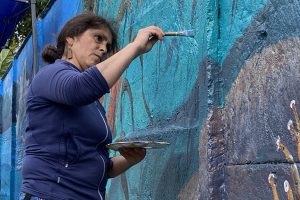

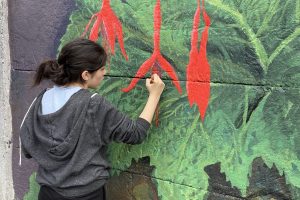
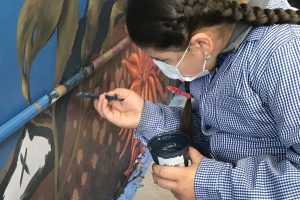
Mons, S., Oyarzun, F. X., Martínez, C., Tremblay, G. G., Gelcich, S., Farías, L., Romero, P., Manríquez, V., Sepúlveda, C., Bonet, M., Guerrero, N. F., Inzunza, S., & Farías, A. (2025). Positioning blue justice at local scales: Insights for transdisciplinarity through art-science integration. Ecology and Society, 30(1), 35. https://doi.org/10.5751/ES-15852-300135
Oyarzún, F. X., & Tremblay, G. (2025). “Tiempos de muralismo at SECOS Millennium Institute: Co-creating knowledge and new imaginaries through arts + science”. Oral presentation at Friday Harbor Laboratories, Washington, EE. UU.
Oyarzún, F. X., & Tremblay, G. (2024). Proyecto “Tiempos de Muralismo” en Tubul: Co-creando conocimientos con arte & ciencia. Oral presentation at the event: “Comunidades, Ciencias & Artes en el Golfo de Arauco”, Municipalidad de Arauco, Chile.
Tremblay, G. G. & Oyarzún, F. X. (2022). Tiempos de muralismo = Times of muralism: The co-creation of the Costal Mural Project. Chile: Genevieve G. Tremblay & Fernanda X. Oyarzún. Reed College Library, Special Collection of Artist Books. https://catalog.library.reed.edu/permalink/01ALLIANCE_REED/ivkaaq/alma99900734355601841
Personal Structures. (2022, September 23). The co-creation of knowledge and imaginaries for ocean sustainability [Conference]. Personal Structures, Palazzo Michiel, Venice, Italy. Retrieved from https://personalstructures.com/events/the-co-creation-of-knowledge-and-imaginaries-for-ocean-sustainability/
Contardo, E. (2025, July 14). Cuando la ciencia se pinta en las murallas del mar: el arte como motor de justicia costera en Chile. Revista Endémico. Retrieved [day month year you accessed it], from https://endemico.org/cuando-la-ciencia-se-pinta-en-las-murallas-del-mar-el-arte-como-motor-de-justicia-costera-en-chile/
SECOS. (2025, May 26). Avanzan actividades de proyecto “Tiempos de Muralismo” e integración de artes y ciencia junto al Liceo de Tongoy. Socioecología Costera. Retrieved [day month year you accessed], from https://socioecologiacostera.cl/mapeo-participativo-en-liceo-de-tongoy-impulsa-conexion-entre-comunidad-territorio-y-arte/
El Mostrador Cultura. (2023, November 12). Documental “Tiempos de muralismo-Hornopirén”. El Mostrador. Retrieved, from https://www.elmostrador.cl/cultura/agenda/2023/11/12/documental-tiempos-de-muralismo-hornopiren/
Mundo Acuícola. (2022, September). Hacia una co-creación de conocimientos para sostenibilidad de la costa: Un diálogo entre artistas y científicos sobre “Tiempos de Muralismo”. Mundo Acuícola. Retrieved [day month year you accessed it], from https://www.mundoacuicola.cl/new/hacia-una-co-creacion-de-conocimientos-para-sostenibilidad-de-la-costa-un-dialogo-entre-artistas-y-cientificos-sobre-tiempos-de-muralismo/
Plataforma Costera. (n.d.). Tiempos de muralismo. Plataforma Costera. Retrieved [day month year you accessed it], from https://www.plataformacostera.org/proyectos/tiempos-de-muralismo/
Bienal ConcepciónThe pilot experience, or “Version Zero”, took place in 2019 with the inter-university support of the University of Concepción (UdeC), the University of Bío-Bío (UBB), and the Catholic University of the Most Holy Conception (UCSC). It was a first effort to co-create interdisciplinary spaces and methodologies together with the community. With “Version One” we sought to deepen that learning and amplify its impact. This edition once again counted on the support of the three universities, as well as backing from the Ministry of Cultures and the Arts and other funding sources.
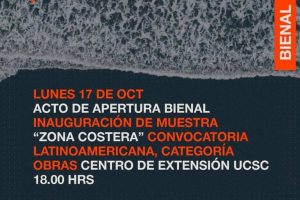
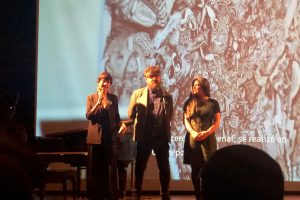
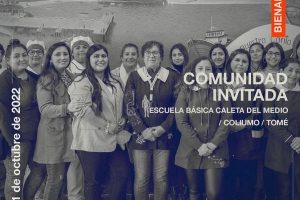
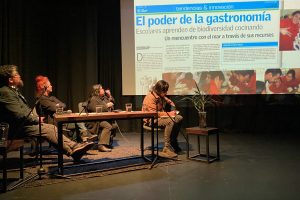
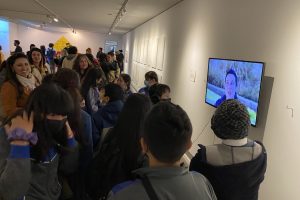
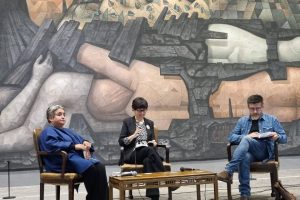
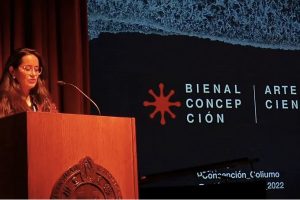
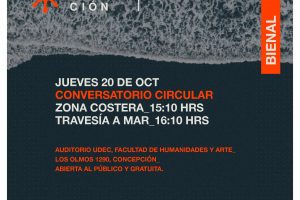
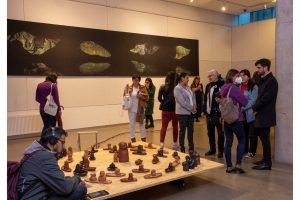
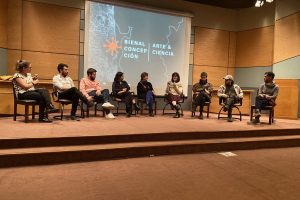
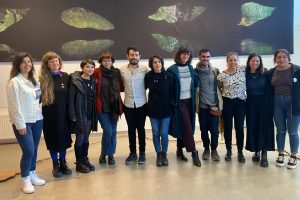
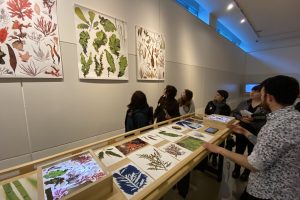
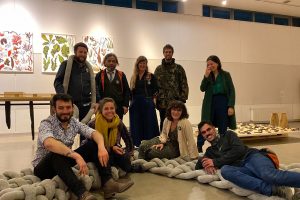
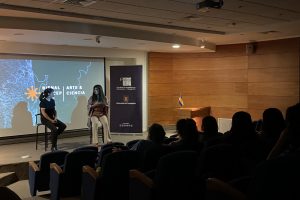
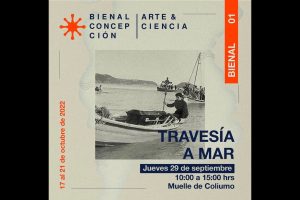
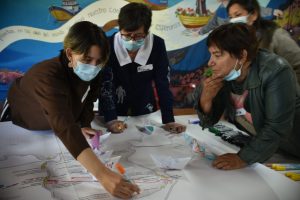
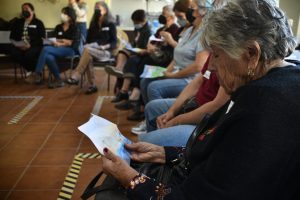
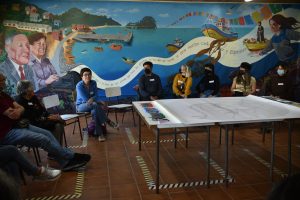
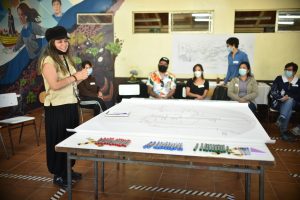
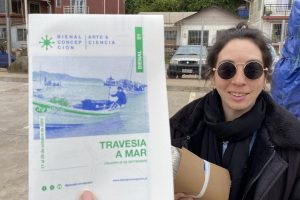
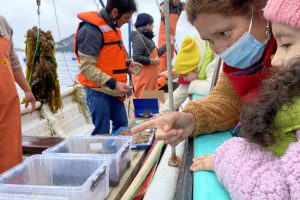
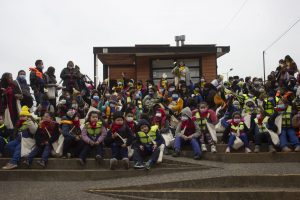
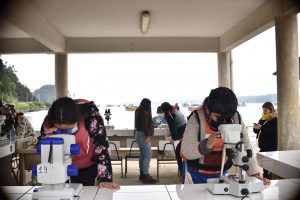
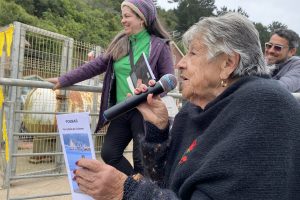
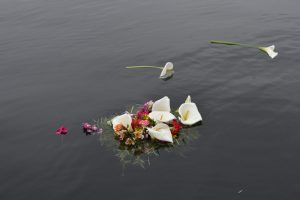
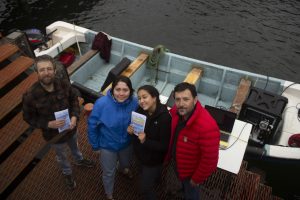
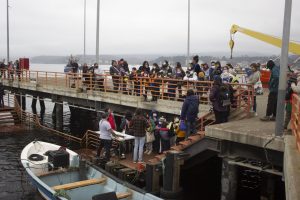
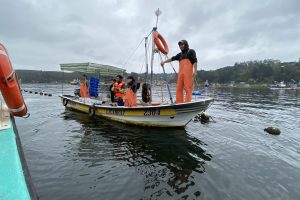
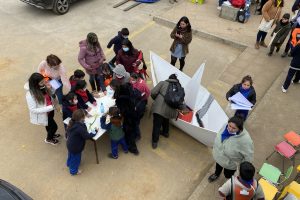
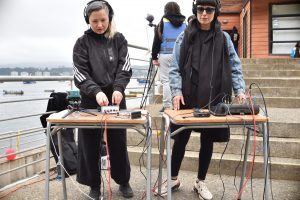
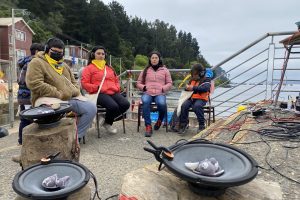
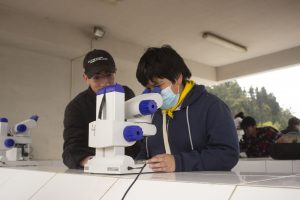
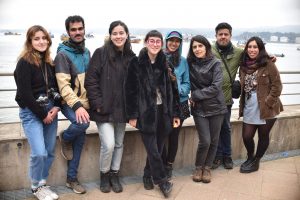
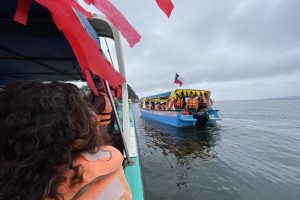
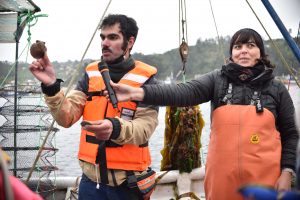
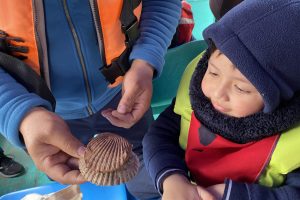
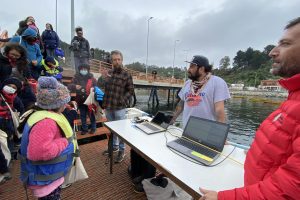
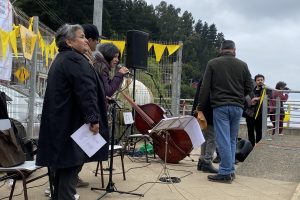
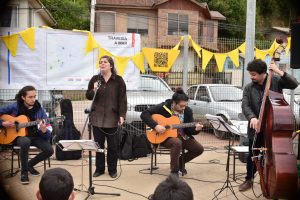
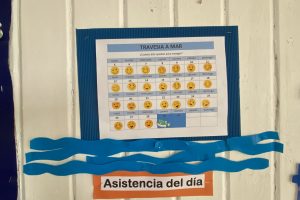
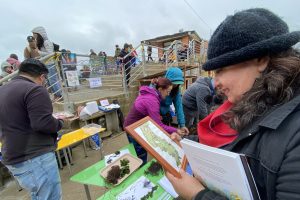
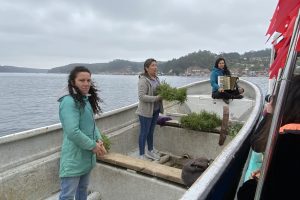
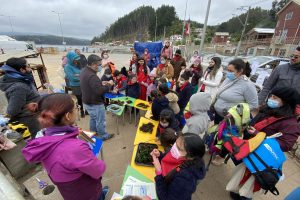
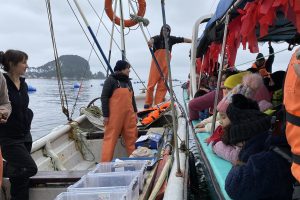
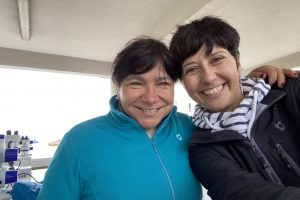
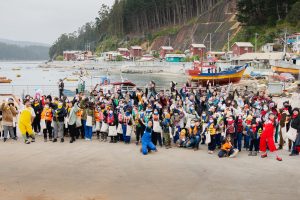
The Bienal Concepción, Art & Science – Version One was held from October 17 to 21, 2022, in collaboration with the community of the coastal village of Coliumo, Biobío Region. Artists, scientists, and local community members joined in dialogue and co-creative exchange, strengthening the bonds of trust woven since the first Bienal, especially around the educational community of the Caleta del Medio Elementary School. It was also an occasion to extend those ties toward the university community, diverse audiences in Concepción, and—through digital platforms—everyone interested in exploring the dialogue between arts, sciences, nature, and community.
The Bienal unfolded through two main milestones: “Travesía a Mar” and “Zona Costera”—the South American Open Call for Art, Science, and Community.
“Travesía a Mar” was conceived as an act of heritage rescue and disciplinary integration. It involved navigating between art and science activities, sailing from Dichato to the Coliumo pier. In collaboration with the Caleta del Medio school community, the event included a creative record to document this rite through participatory methodologies developed between invited teaching artists and the school’s students.
“Zona Costera” exhibition was the result of a South American Call for works that involved Art, Science, and Community. It presented a curatorial selection of contemporary art–science works that provided both form and conceptual references for this edition. The interdisciplinary curatorial team established two categories: works and projects.
In the works category, six pieces were selected from Chile-based artists, plus up to two from other Latin American countries. These were presented in a collective exhibition at the UCSC Extension Center.
In the projects category, eight initiatives at the intersections of art, science, and community were shared—projects in artistic or environmental education and research. These were presented as audiovisual capsules, screened as an opening for the Circular Conversation, a day of dialogue bringing together agents from the arts, sciences, territories, and the Bienal’s public, held at the Aula Magna of the University of Bío-Bío and streamed live on the Bienal’s social networks.
You can read here an article publish in “Endemico” magazine: link.
Sáez Gutiérrez, N., Oyarzún Dunlop, F., & Camaño Saavedra, M. (en prensa). Bienal Concepción: Reflexiones y principios de un entorno co-creativo para artistas, científicos/as y la comunidad educativa de Caleta del Medio, Coliumo. En N. Carrasco Henríquez, P. Fuentealba, & N. de Cortillas (Eds.), Habilitantes para el diálogo intercientífico. Universidad de Concepción.
Álvarez Chávez, Lorena. 2022. “I Bienal Concepción, Arte & Ciencia: el agua como portal de acceso a tiempos profundos.” Endémico, October 26, 2022. Accessed [date]. https://endemico.org/i-bienal-concepcion-arte-ciencia-el-agua-como-portal-de-acceso-a-tiempos-profundos/
Farcodi. (2022, November 22). Bienal Concepción Arte + Ciencia cerró su primera edición, apostando por la transdisciplinariedad. FARCODI. https://farcodi.ubiobio.cl/sin-categoria/2022/11/22/bienal-concepcion-arte-ciencia-cerro-su-primera-edicion-apostando-por-la-transdisciplinariedad/
El Mostrador. (2022, October 14). Bienal de arte y ciencia en Concepción. El Mostrador. https://www.elmostrador.cl/cultura/2022/10/14/bienal-de-arte-y-ciencia-en-concepcion/
Ministerio de las Culturas, las Artes y el Patrimonio. (n.d.). Concepción acoge la primera Bienal Arte + Ciencia con representantes de Chile, Argentina y Brasil. https://www.cultura.gob.cl/agendacultural/concepcion-acoge-la-primera-bienal-arte-ciencia-con-representantes-de-chile-argentina-y-brasil/
Endémico. (n.d.). I Bienal Concepción Arte + Ciencia: el agua como portal de acceso a tiempos profundos. https://endemico.org/i-bienal-concepcion-arte-ciencia-el-agua-como-portal-de-acceso-a-tiempos-profundos/
Universidad de Concepción Noticias. (n.d.). Bienal Concepción Arte + Ciencia. https://noticias.udec.cl/tag/bienal-concepcion-arte-ciencia/
Diario Concepción. (2023, February 21). Bienal Arte + Ciencia expone parte de su primera versión en Casa del Arte. https://www.diarioconcepcion.cl/cultura/2023/02/21/bienal-arte-ciencia-expone-parte-de-su-primera-version-en-casa-del-arte.html
Diario Concepción. (2022, September 28). Travesía a mar abre primera versión de Bienal Concepción Arte + Ciencia. https://www.diarioconcepcion.cl/cultura/2022/09/28/travesia-a-mar-abre-primera-version-de-bienal-concepcion-arte-ciencia.html
Diario Concepción. (2022, July 15). Bienal Concepción Arte + Ciencia dio a conocer seleccionados. https://www.diarioconcepcion.cl/cultura/2022/07/15/bienal-concepcion-arte-ciencia-dio-a-conocer-seleccionados.html
Diario Concepción. (2022, March 31). Bienal Concepción Arte + Ciencia hace llamado para participar en edición 2022. https://www.diarioconcepcion.cl/cultura/2022/03/31/bienal-concepcion-arte-ciencia-hace-llamado-para-participar-en-edicion-2022.html
Farcodi. (2019, April 10). Bienal Concepción Arte y Ciencia. Diario Concepción. https://www.diarioconcepcion.cl/sociales/2019/04/10/bienal-concepcion-arte-y-ciencia.html
YouTube. (2019, April 3). Bienal Concepción Arte + Ciencia. https://www.youtube.com/watch?v=9JoJM4BAGbg
El Mostrador. (2019, April 3). Bienal Concepción Arte + Ciencia reunirá a artistas, científicos y la comunidad local. https://www.elmostrador.cl/cultura/2019/04/03/bienal-concepcion-arte-ciencia-reunira-a-artistas-cientificos-y-la-comunidad-local/
Saras Institute. (n.d.). Saras participa de inédita Bienal de Arte + Ciencia en Chile. https://saras-institute.org/es/saras-participa-de-inedita-bienal-de-arte-y-ciencia-en-chile/
Proyecto Robsonella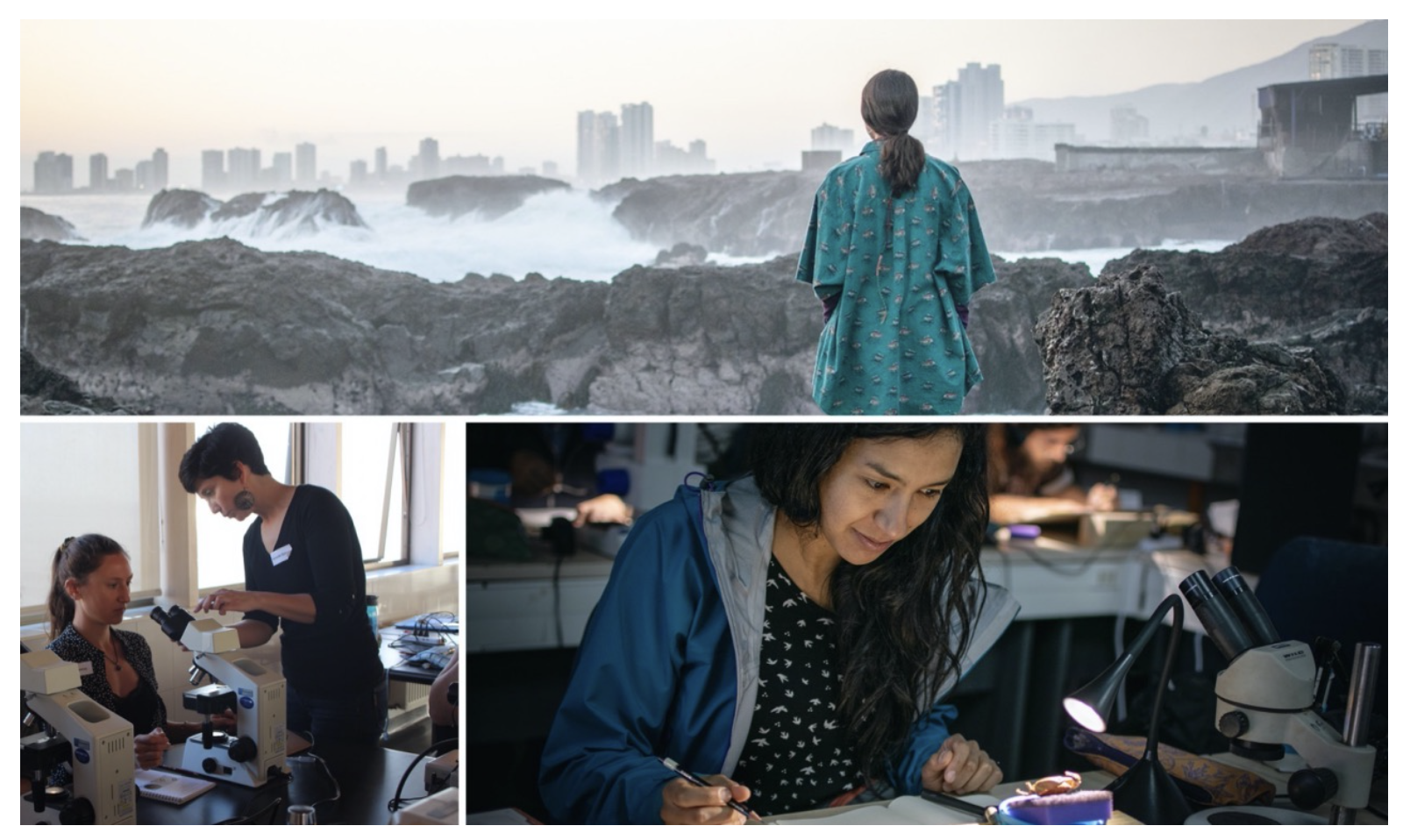
Scientific illustration addresses concrete problems of visualization in research, thought, and the communication of science. It is not only at the service of science, but also a contribution to the very generation of knowledge. Today, there is a wide range of courses and workshops in nature illustration; however, these tend to focus on techniques and established content, placing less emphasis on the relationship between researcher and illustrator, or on current research.
“Proyecto Robsonella,” co-created by Felipe Portilla and myself, ran from 2019 to 2025, offering intensive in-person, online, and hybrid courses lasting between 35 and 51 hours. These courses wove together artistic, technical, and design knowledge with scientific culture and research on marine biodiversity—from protists to large vertebrates—while also addressing ecology, reproductive cycles, behavior, and socio-ecological processes.
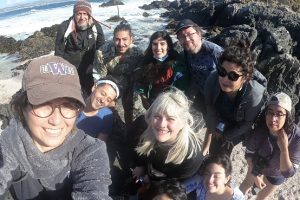
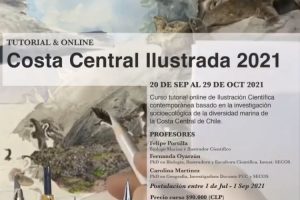
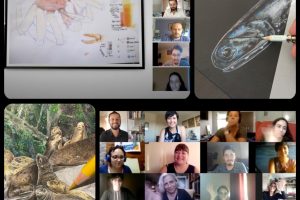
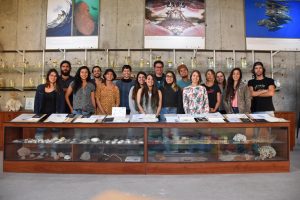
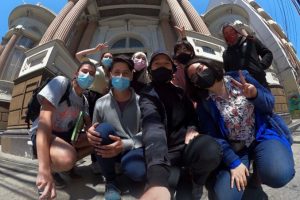
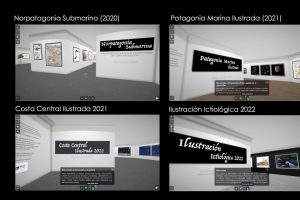
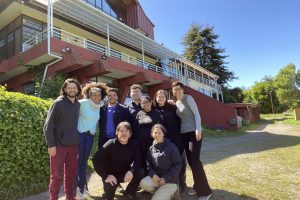
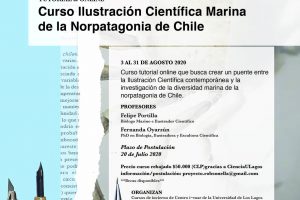
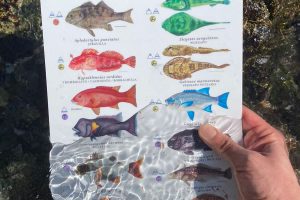
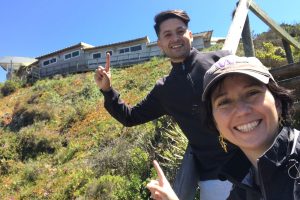
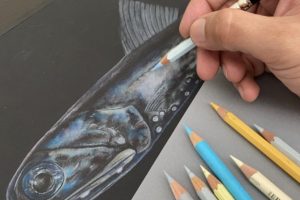
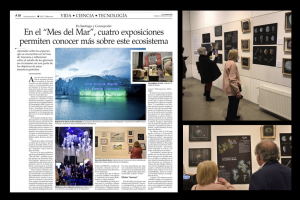
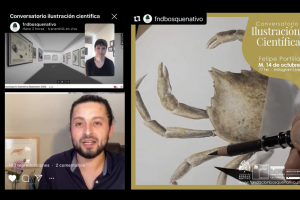
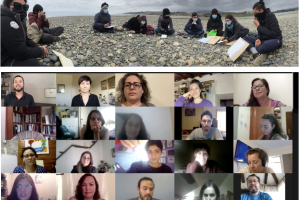
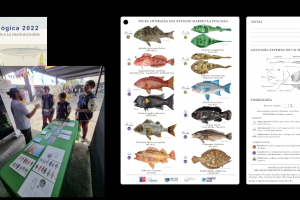
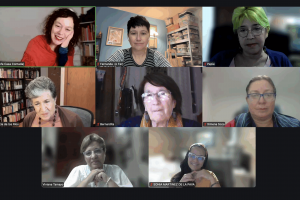
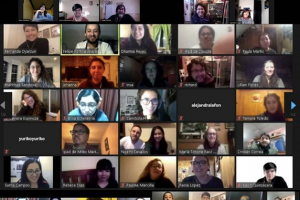
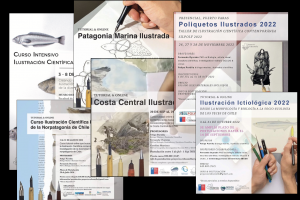
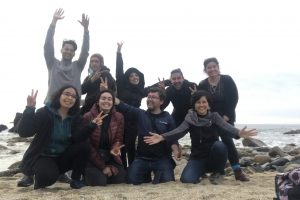
In these courses, the researcher–illustrator relationship was fundamental. We therefore created spaces and opportunities where illustrators and researchers could engage in dialogue and develop illustration projects that directly responded to the real needs of contemporary marine science research in Chile.
The last course, held in 2024 and designed for alumni of Proyecto Robsonella, was titled “Professionalization Robsonella 2024: exploring the professional path of contemporary scientific illustration in Chile.” It took the training one step further. Its aim was to create spaces for practice, dialogue, and reflection on the challenges, processes, and opportunities of professional work in contemporary scientific illustration, nourishing an ecosystem to sustain illustrators.
You can explore some of the courses through the virtual galleries available on the Artsteps platform, Below are two of them, but keep exploring, soem have guided tours!
Throughout the years of Proyecto Robsonella, we fostered collaborative networks, collectively analyzed, thought through, and learned about the professional aspects of scientific illustration, and nurtured reflection on the vision and mission of this craft—so that it may serve not only personal growth but also the study, visualization, and appreciation of our natural heritage. We are deeply grateful to everyone who took part in this project, and special thanks to the institutions that supported us including: Instituto Milenio en Socio-ecología Costera (SECOS), Observatorio de la Costa, Centro i-mar de la Universidad de Los Lagos, Estación Costera de Investigaciones Marinas (ECIM-PUC), Sociedad Chilena de Ciencias del Mar, Museo del Mar de Universidad Arturo Pratt, Silpoly, Capital Azul and Faunamar Ltda.


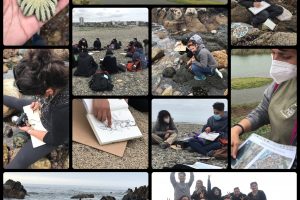


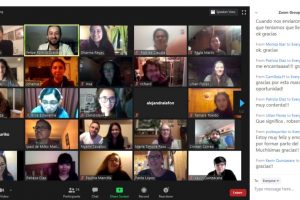

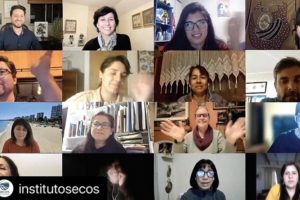

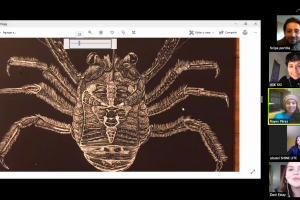
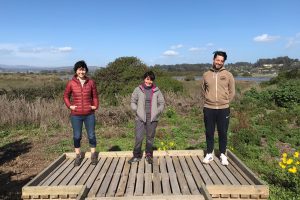
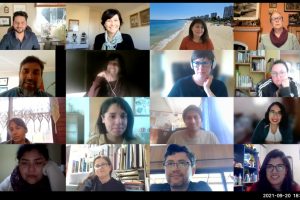
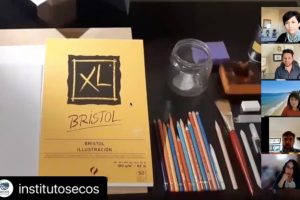
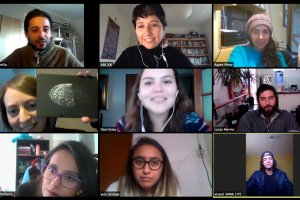
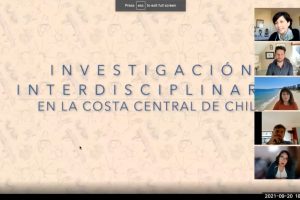
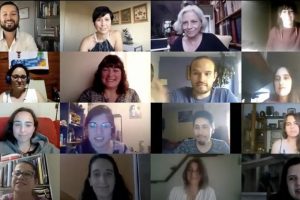
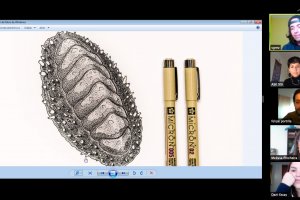



Students from Robsonella Project courses were part of this exhibition held in 2022 in Concepción as part of the Marine Sciences Congress in Chile. My sculpture of the Chiloé octopus, “Escaping form plastic”, was also exhibited.
Oyarzún, F. X., & Portilla, F. (2023). Proyecto Robsonella: creando espacios de comunicación y co-creación entre los ilustradores contemporáneos. Congreso de Ciencias del Mar 2023, Puerto Montt. Oral Presentation.
Oyarzún, F. X., & Portilla, F. (2021). Ilustración científica contemporánea y socioecología costera: repensando los cursos de ilustración científica en respuesta a las necesidades de investigación de la diversidad marina de Chile. Congreso de Ciencias del Mar, Simposio SECOS: El arte de la socio-ecología costera: experiencias de co-creación e interdisciplina. Virtual oral presentation.
Oyarzún, F. X., & Portilla, F. (2019). Proyecto Robsonella: creando un puente entre la ilustración científica y la investigación de la diversidad marina de Chile. XXXIX Congreso de Ciencias del Mar, Iquique, Chile. Oral presentation.
Socioecología Costera. (2023, [n.d.]). Charla XLII Congreso Ciencias del Mar 2023: Proyecto Robsonella, creando espacios de comunicación y co-creación entre los ilustradores científicos contemporáneos. https://socioecologiacostera.cl/evento/charla-xlii-congreso-ciencias-del-mar-2023-proyecto-robsonella-creando-espacios-de-comunicacion-y-co-creacion-entre-los-ilustradores-cientificos-contemporaneos/
Diario Concepción. (2022, May 12). Artes y ciencia dialogan en muestra enfocada en el océano. https://www.diarioconcepcion.cl/ciencia-y-sociedad/2022/05/12/artes-y-ciencia-dialogan-en-muestra-enfocada-en-el-oceano.html
Socioecología Costera. (2021, [n.d.]). Arte+Ciencia se unen en curso tutorial online de ilustración científica marina de Chile central. https://socioecologiacostera.cl/en/arteciencia-se-unen-en-curso-tutorial-online-de-ilustracion-cientifica-marina-de-chile-central/
Radio UdeC. (2021, [n.d.]). Proyecto Robsonella. https://www.radioudec.cl/tag/proyecto-robsonella/
Ladera Sur. (2021, [n.d.]). No te pierdas el curso intensivo de ilustración científica marina de Chile central: Costa Central Ilustrada 2021. https://laderasur.com/charlas-eventos/no-te-pierdas-el-curso-intensivo-de-ilustracion-cientifica-marina-de-chile-central-costa-central-ilustrada-2021/?srsltid=AfmBOoo46X9VHxcPJ23ga7s2AxoYqLsowcoA9zWUuPf37_bnWF1TmeZk
Diario Acuícola. (2021, July). Arte y ciencia: ya está abierta la inscripción para curso de ilustración científica marina de Chile central. https://www.diarioacuicola.cl/noticia/actualidad/2021/07/arte-y-ciencia-ya-esta-abierta-la-inscripcion-para-curso-de-ilustracion-cientifica-marina-de-chile-central
Diario Concepción. (2021, July 23). Ciencia y arte se unen para dar vida a Costa Central Ilustrada. https://www.diarioconcepcion.cl/ciencia-y-sociedad/2021/07/23/ciencia-y-arte-se-unen-para-dar-vida-a-costa-central-ilustrada.html
CIGIDEN. (2021, [n.d.]). Doctora Carolina Martínez participará en el curso tutorial online de ilustración científica marina de Chile central. https://www.cigiden.cl/doctora-carolina-martinez-participara-en-el-curso-tutorial-online-de-ilustracion-cientifica-marina-de-chile-central/
Universidad de Los Lagos. (2020, September). Curso de invierno IMAR culmina con exposición virtual de arte y ciencia. https://www.ulagos.cl/2020/09/curso-de-invierno-imar-culmina-con-exposicion-virtual-de-arte-y-ciencia/
Facebook. (2021, [n.d.]). Video sobre curso de ilustración científica marina de Chile central. https://www.facebook.com/watch/?v=817879366231090
ASKXXI
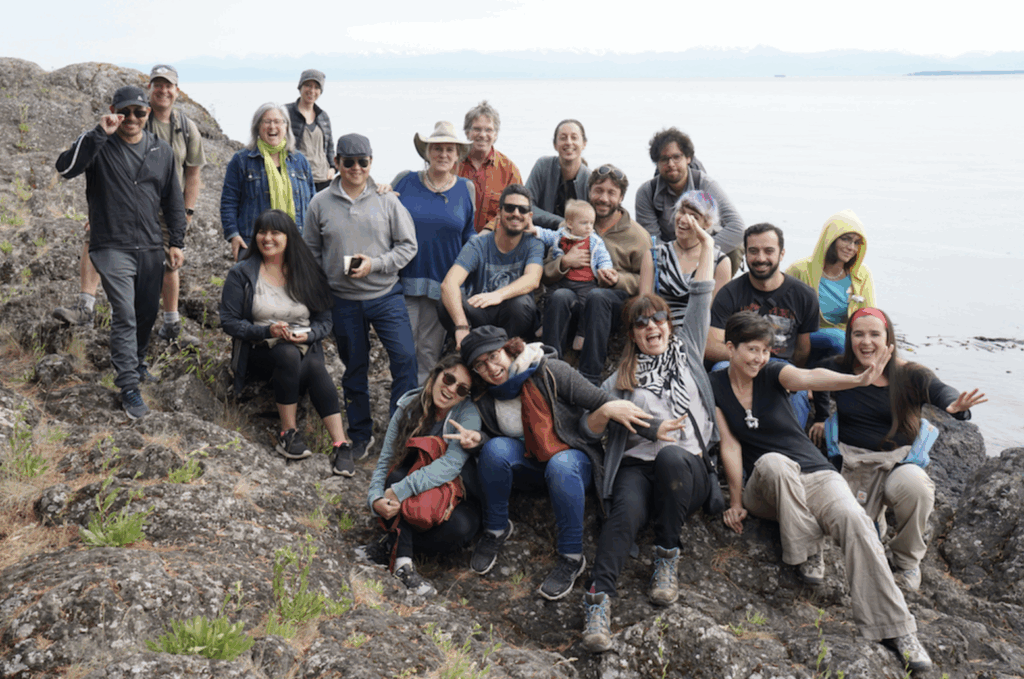
Between 2017 and 2019, I co-directed ASKXXI, the first art + science diplomacy program linking Chile and the United States. Supported by the US Embassy in Santiago, the program brought together artists, scientists, designers, and communicators to explore urgent environmental and conservation challenges through immersive travel, fieldwork, and cross-cultural dialogue.
Ten fellows were selected through a juried process and engaged with the marine and terrestrial ecologies of Southern Chile and the Pacific Northwest of the US. Together we visited field stations, laboratories, cultural sites, and communities, weaving connections between research and creative practice. The program nurtured critical and imaginative responses to pressing issues such as salmon sustainability, ocean acidification, harmful algal blooms, land use, wildfires, and global change, culminating in exhibitions and new interdisciplinary works.
Genevieve Tremblay — Co-Director: Executive/Academic Program (US)
Fernanda Oyarzún — Co-Director: Academic Program (Chile)
Belén Gallardo — Co-Director: Executive (Chile)
Nélida Pohl — Co-Director: Academic Program & Communications (Chile)
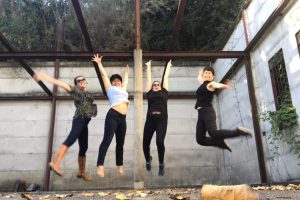
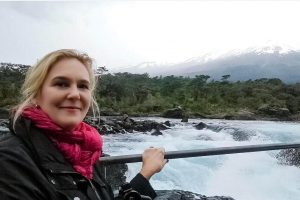
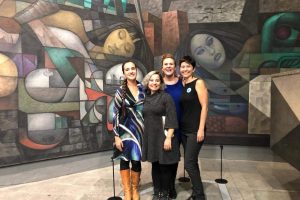
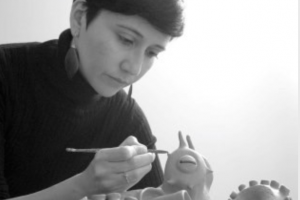
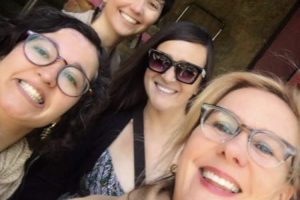
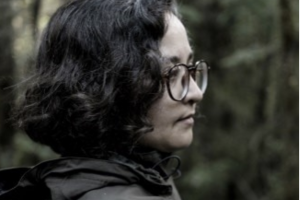
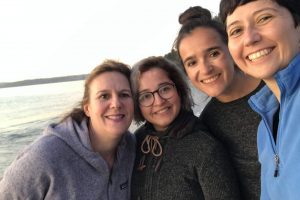
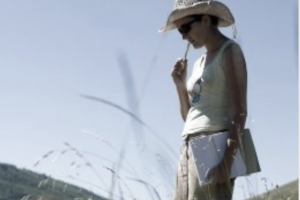
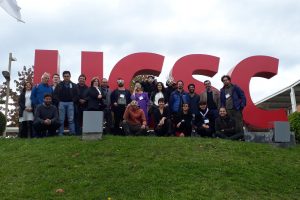
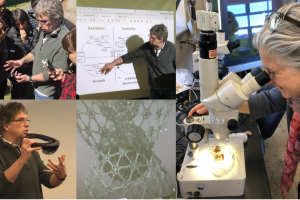
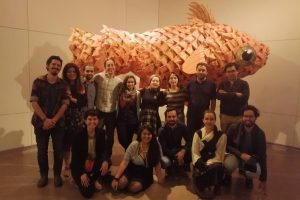
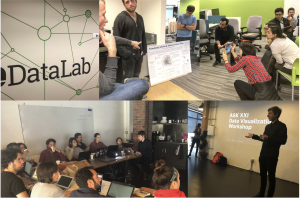
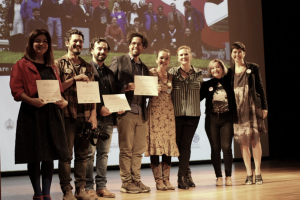
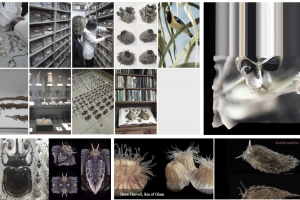
The program unfolded through four phases combining research, fieldwork, laboratory and classroom study, and studio-based practice. Participants engaged with the marine and terrestrial ecologies of Southern Chile and the Pacific Northwest of the US.
Faculty connected participants with active research on salmon sustainability, invasive species, harmful algal blooms, ocean acidification, conservation, land use, wildfires, and global change—delivering cross-cultural insights and perspectives. Connections with scientists, artists, educators, and technologists at the forefront of their fields sparked broader societal conversations about ecology, and about natural and cultural diversity.
The residential and travel-based aspects of the program provided time and space to explore land and culture, reflect upon looming bioregional threats, and nurture creative dialogue around environmental issues, resulting in new interdisciplinary works.
Ten Chilean artists, scientists, hybrid practitioners, and communicators were selected through a juried process. Their immersive one-year journey introduced them to diverse ecologies, research communities, and cultural contexts in Chile and the US, offering a rare opportunity to reflect on environmental threats and to generate new creative work.
José de la Parra — Filmmaker, science communicator
Marcelo Velasco — Biologist, philosopher
Cecilia Toro — Animator
Thomas Kramer — Agronomist
Pablo Savaria — Biologist
Fernando Mejías — Journalist
Miguel Bolt — Multidisciplinary artist
Marianela Camaño — Architect, educator, artist, performer
Javiera Constanzo — Veterinarian, scientific illustrator
Beatriz Buttazzoni — Animator, science communicator
Nicole García — Graphic and data visualization designer
Bruno Pohl — Honorary Fellow
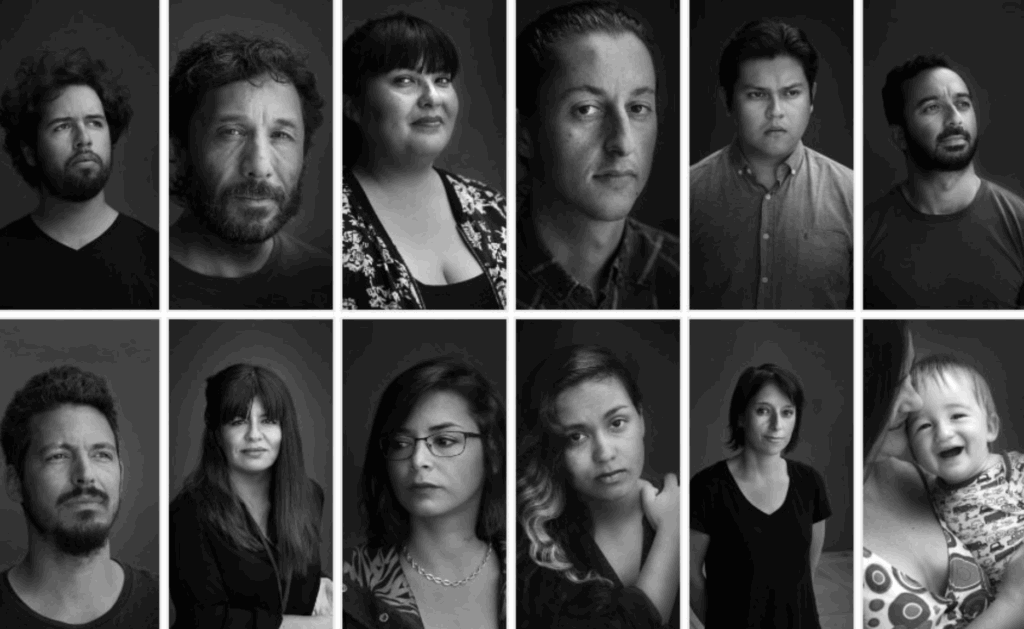
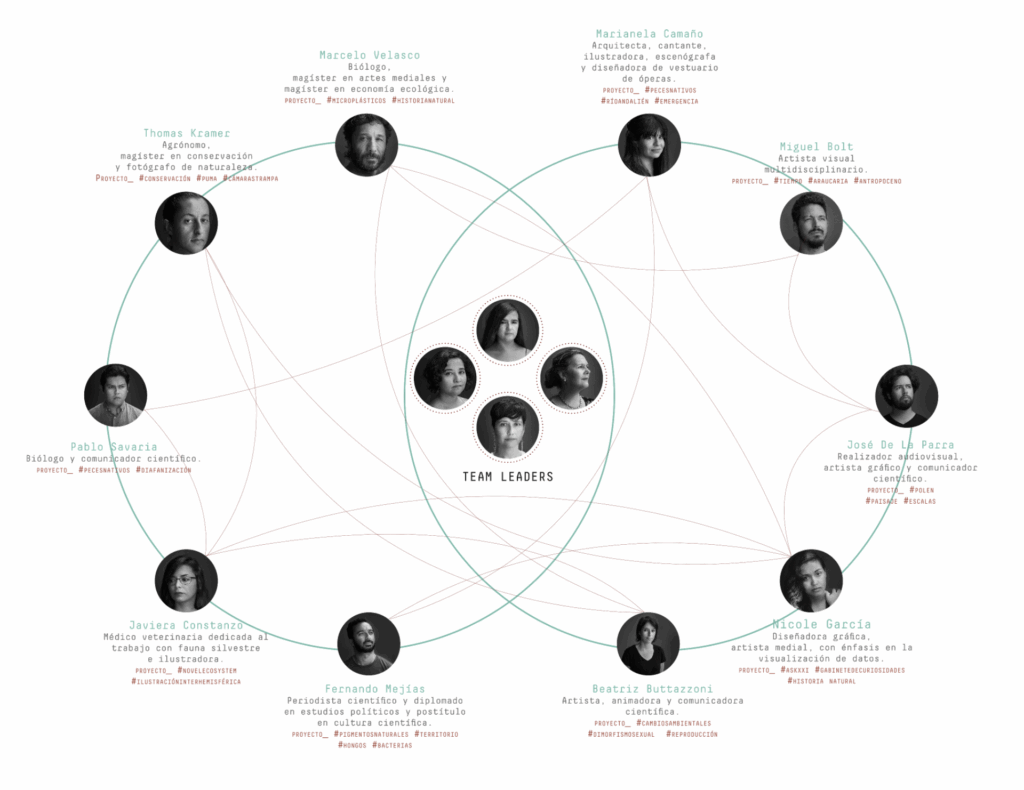
United States: A three-week expedition across the Puget Sound region that catalyzed interdisciplinary networks. Participants visited studios, workshops, and laboratories spanning ecology, embryology, biomechanics, technology research, science communication, and data visualization. We visited Friday Harbor Laboratories (UW), the DataLab from University of Washington, University of Puget Sound, Microsoft Research, Schema Design, Pacific Science Center, Altspace VR, Pixvana, Sliprabbit Studio, Amazon Spheres to learn about the leading industry innovations and applications of virtual reality, data visualization. Also National parks, Museums and Artist Studio visits included Slater Museum, Burke Museum, Ballard Locks, Slipprabbit Studio,Ginny Ruffner Studios, George Rodriguez Studio.
Chile: In Chiloé Island we visited Senda Darwin terrestrial field station and the Melimoyu marine station, engaging with ecologists in both natural and laboratory settings and exploring links between field stations and local communities. In Santiago we explored of animation as a tool for science education, particularly in medical training. In Concepción we visited Bi-Lab at UCSC and we worked on independent development of final art projects, culminating in an exhibition at Universidad Católica de la Santísima Concepción (UCSC) in collaboration with Bienal Concepción, Arte & Ciencia.
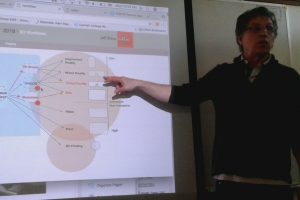
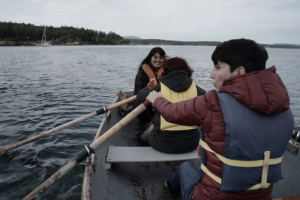
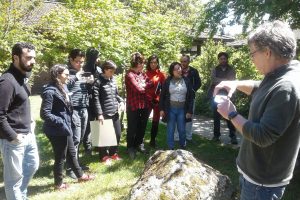
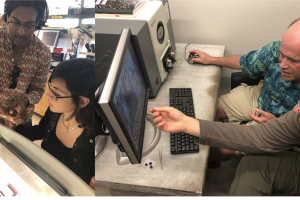
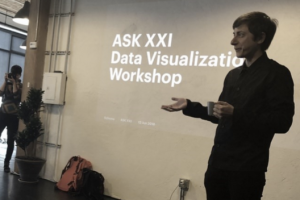
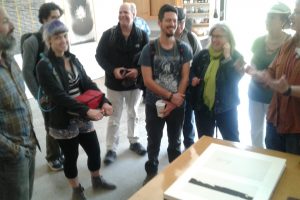
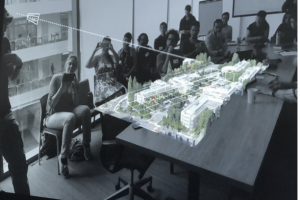
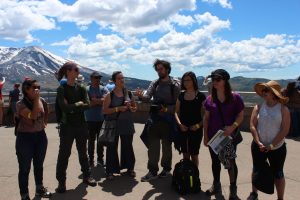
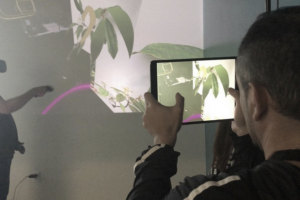
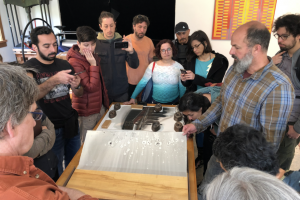
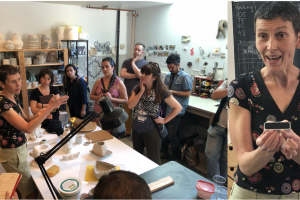
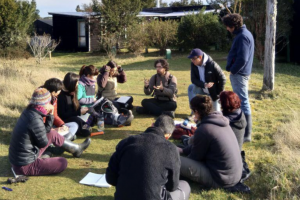
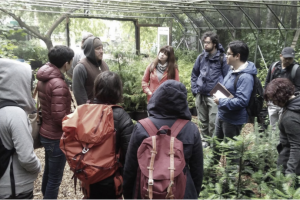
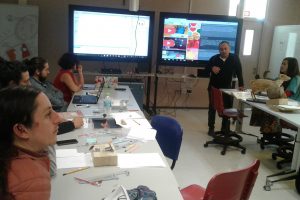
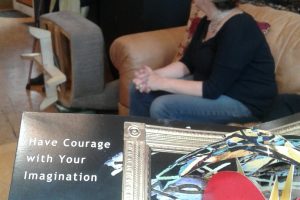
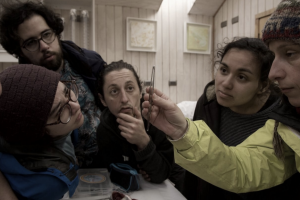
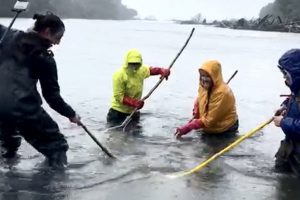
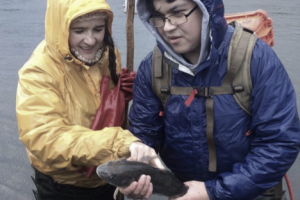
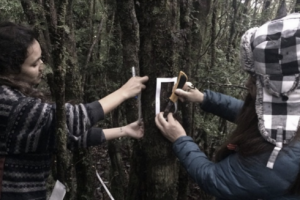
Our diploma program, Construction of Interdisciplinary Knowledge Art and Science in the XXI Century, hosted at the Center for Research in Biodiversity and Sustainable Environments (CIBAS) at the Universidad Católica de la Santísima Concepción, is the first program of its kind and our pilot, sponsored by the US Embassy, Chile (Public Affairs) in 2017-19.

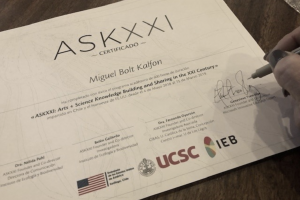

Tremblay, G., Brice, J., Oyarzun, F. X., Pohl, N., & Gallardo, B. (2022). Ecologies of interdisciplinary research & practice in art + science and technology. Vibrant Ecologies of Research, 1(1). https://doi.org/10.3898/27526119
Oyarzún, F. X., Tremblay, G., Gallardo, B., & Pohl, N. (2020). ASKXXI Research Network: Reimagining Ecology and Art for the XXICentury. Ocean Science Meeting 2020, San Diego, EE. UU. Lightning talk & interactive poster.
Retícula. (2019, March–April). Collective exhibition of the ASKXXI program. UCSC Gallery, Concepción, Chile. (Link)
Oyarzún, F. X. (2018, marzo). ASKXXI: Arts+Science Knowledge – Building and Sharing in the XXI Century. Friday Harbor Laboratories. https://depts.washington.edu/fhl/tidebites/Vol55/index.htmlInvestigadora de la Facultad de Ciencias y CIBAS representó a la UCSC en congreso internacional sobre ciencias del mar. (2020, abril 8). Página V. https://paginav.cl/2020/04/08/investigadora-de-la-facultad-de-ciencias-y-cibas-represento-a-la-ucsc-en-congreso-internacional-sobre-ciencias-del-mar/Retícula: la exposición que re-imagina la ecología y arte para el siglo XXI. (2019, marzo 7). Instituto de Ecología y Biodiversidad. https://ieb-chile.cl/noticia/reticula-la-exposicion-que-re-imagina-la-ecologia-y-arte-para-el-siglo-xxi/
ASKXXI: súmate al innovador programa que une arte, ciencia y tecnología. (2018, marzo 23). Instituto de Ecología y Biodiversidad. https://ieb-chile.cl/noticia/askxxi-sumate-al-innovador-programa-que-une-arte-ciencia-y-tecnologia/
ASKXXI, el programa que une arte, ciencia y tecnología. (2018, marzo). Sociedad de Ecología de Chile. https://www.socecol.cl/askxxi-programa-une-arte-ciencia-tecnologia/
¿En qué consiste el programa interdisciplinario ASKXXI?. (2018, agosto 17). TVU. https://www.tvu.cl/comunidades/entrevistas-lcc/2018/08/17/en-que-consiste-el-programa-interdisciplinario-askxxi.html
Tiempos de Muralismo is an arts + science project that, since 2019, has been weaving together artistic practices, scientific research, traditional wisdom, and the delicate threads of memory, emotion, and hope. It is a collective and co-creative attempt to reimagine knowledge and sustainable futures—through murals that become both mirrors and spaces to hold nourishing dialogues between diverse ways of knowing.
The project unfolds in elementary and technical high schools of six coastal villages in Chile where the Millennium Institute SECOS conducts research. These schools are the beating hearts of the communities of Chungungo, Tongoy, Coliumo, Tubul, Caleta El Manzano, and Hornopirén—villages that stretch across landscapes ranging from the desert of the north to the temperate rainforests and fjords of the south.
Our process is iterative, purposefully slow, and rooted in place. From the first hesitant conversations to the final brushstrokes of paint, we weave and cultivate relationships so that each mural emerges as an embodied witness of the knowledge, emotions, and memories that have breathed through the process—from the biodiversity of its territory, to scientific research, to lived stories. Students, teachers, fishermen and fisherwomen, seaweed gatherers, artists, and researchers stand side by side, shaping collective visions that ripple across community walls.











































The journey began in 2019 in Tongoy, at Liceo Carmen Rodríguez, born from a community request to reimagine some of the arts + science activities I had designed. Together with muralist Alonso Salazar, interdisciplinary artist Genevieve Tremblay, and myself—then a researcher at the Millennium Nucleus MUSELS (today SECOS)—we created the first mural. When the pandemic arrived, halting our gatherings, the project responded by opening yet another door: experiments in virtual and augmented reality, keeping the thread of collaboration alive across distance and sparking multiple spin-off projects.
https://www.youtube.com/watch?v=LEVi3_LhEaA&t=26s
Over time, the circle of artists who have joined at different stages has widened, and I cannot but name them here with deep gratitude: Sol Pacheco, Renata Garretón, Nicolás Sáez, Marco Ammatelli, Andrea Pizarro, Paola Hernández, Felipe Portilla, Hernán Aguilera, Nathan DiPietro (VR mural artist), and Roberto Varas (photography and video). The project has also flourished thanks to the heart and dedication of teachers and community members, whom I would like to highlight: Escuela San Andrés de Chungungo (Claudio Zambra); Liceo Carmen Rodríguez of Tongoy (Macarena Contreras, Paula Díaz, Alexis Vallejos, and director Perla Araya); Escuela Caleta del Medio de Coliumo (director María Eliana Vega and Fabiola Fernández); Escuela Brisas del Mar de Tubul (teacher Jessenia Miño and fisherman Teodoro Leal); Escuela El Manzano (director Jacqueline Ribera, teacher Elisa Santander, and aquaculturists Maida Gueicha and Erasmo González); and Liceo Hornopirén (Rodrigo Castillo).
Finally, the project has also become a way to collaborate with other institutions, such as the Millennium Nucleus UPWELL, CEAZA, the Bienal Concepción Arte & Ciencia, Laboratorio del Antropoceno, and Quiero Mi Barrio Tubul.
A selection of press articles, catalog entries, and event documentation highlights the trajectory of Tiempos de Muralismo across different contexts of art, science, and community collaboration. From news coverage and interviews to academic collections and international exhibitions, these resources offer multiple entry points to explore the project’s processes and impacts. You can also visit the virtual gallery hosted on Artsteps to experience the works and stories online of the first period of the project: Artsteps – Tiempos de Muralismo



























Mons, S., Oyarzun, F. X., Martínez, C., Tremblay, G. G., Gelcich, S., Farías, L., Romero, P., Manríquez, V., Sepúlveda, C., Bonet, M., Guerrero, N. F., Inzunza, S., & Farías, A. (2025). Positioning blue justice at local scales: Insights for transdisciplinarity through art-science integration. Ecology and Society, 30(1), 35. https://doi.org/10.5751/ES-15852-300135
Oyarzún, F. X., & Tremblay, G. (2025). “Tiempos de muralismo at SECOS Millennium Institute: Co-creating knowledge and new imaginaries through arts + science”. Oral presentation at Friday Harbor Laboratories, Washington, EE. UU.
Oyarzún, F. X., & Tremblay, G. (2024). Proyecto “Tiempos de Muralismo” en Tubul: Co-creando conocimientos con arte & ciencia. Oral presentation at the event: “Comunidades, Ciencias & Artes en el Golfo de Arauco”, Municipalidad de Arauco, Chile.
Tremblay, G. G. & Oyarzún, F. X. (2022). Tiempos de muralismo = Times of muralism: The co-creation of the Costal Mural Project. Chile: Genevieve G. Tremblay & Fernanda X. Oyarzún. Reed College Library, Special Collection of Artist Books. https://catalog.library.reed.edu/permalink/01ALLIANCE_REED/ivkaaq/alma99900734355601841
Personal Structures. (2022, September 23). The co-creation of knowledge and imaginaries for ocean sustainability [Conference]. Personal Structures, Palazzo Michiel, Venice, Italy. Retrieved from https://personalstructures.com/events/the-co-creation-of-knowledge-and-imaginaries-for-ocean-sustainability/
Contardo, E. (2025, July 14). Cuando la ciencia se pinta en las murallas del mar: el arte como motor de justicia costera en Chile. Revista Endémico. Retrieved [day month year you accessed it], from https://endemico.org/cuando-la-ciencia-se-pinta-en-las-murallas-del-mar-el-arte-como-motor-de-justicia-costera-en-chile/
SECOS. (2025, May 26). Avanzan actividades de proyecto “Tiempos de Muralismo” e integración de artes y ciencia junto al Liceo de Tongoy. Socioecología Costera. Retrieved [day month year you accessed], from https://socioecologiacostera.cl/mapeo-participativo-en-liceo-de-tongoy-impulsa-conexion-entre-comunidad-territorio-y-arte/
El Mostrador Cultura. (2023, November 12). Documental “Tiempos de muralismo-Hornopirén”. El Mostrador. Retrieved, from https://www.elmostrador.cl/cultura/agenda/2023/11/12/documental-tiempos-de-muralismo-hornopiren/
Mundo Acuícola. (2022, September). Hacia una co-creación de conocimientos para sostenibilidad de la costa: Un diálogo entre artistas y científicos sobre “Tiempos de Muralismo”. Mundo Acuícola. Retrieved [day month year you accessed it], from https://www.mundoacuicola.cl/new/hacia-una-co-creacion-de-conocimientos-para-sostenibilidad-de-la-costa-un-dialogo-entre-artistas-y-cientificos-sobre-tiempos-de-muralismo/
Plataforma Costera. (n.d.). Tiempos de muralismo. Plataforma Costera. Retrieved [day month year you accessed it], from https://www.plataformacostera.org/proyectos/tiempos-de-muralismo/
The pilot experience, or “Version Zero”, took place in 2019 with the inter-university support of the University of Concepción (UdeC), the University of Bío-Bío (UBB), and the Catholic University of the Most Holy Conception (UCSC). It was a first effort to co-create interdisciplinary spaces and methodologies together with the community. With “Version One” we sought to deepen that learning and amplify its impact. This edition once again counted on the support of the three universities, as well as backing from the Ministry of Cultures and the Arts and other funding sources.














































The Bienal Concepción, Art & Science – Version One was held from October 17 to 21, 2022, in collaboration with the community of the coastal village of Coliumo, Biobío Region. Artists, scientists, and local community members joined in dialogue and co-creative exchange, strengthening the bonds of trust woven since the first Bienal, especially around the educational community of the Caleta del Medio Elementary School. It was also an occasion to extend those ties toward the university community, diverse audiences in Concepción, and—through digital platforms—everyone interested in exploring the dialogue between arts, sciences, nature, and community.
The Bienal unfolded through two main milestones: “Travesía a Mar” and “Zona Costera”—the South American Open Call for Art, Science, and Community.
“Travesía a Mar” was conceived as an act of heritage rescue and disciplinary integration. It involved navigating between art and science activities, sailing from Dichato to the Coliumo pier. In collaboration with the Caleta del Medio school community, the event included a creative record to document this rite through participatory methodologies developed between invited teaching artists and the school’s students.
“Zona Costera” exhibition was the result of a South American Call for works that involved Art, Science, and Community. It presented a curatorial selection of contemporary art–science works that provided both form and conceptual references for this edition. The interdisciplinary curatorial team established two categories: works and projects.
In the works category, six pieces were selected from Chile-based artists, plus up to two from other Latin American countries. These were presented in a collective exhibition at the UCSC Extension Center.
In the projects category, eight initiatives at the intersections of art, science, and community were shared—projects in artistic or environmental education and research. These were presented as audiovisual capsules, screened as an opening for the Circular Conversation, a day of dialogue bringing together agents from the arts, sciences, territories, and the Bienal’s public, held at the Aula Magna of the University of Bío-Bío and streamed live on the Bienal’s social networks.
You can read here an article publish in “Endemico” magazine: link.
https://www.youtube.com/watch?v=lHMJ9B1SuzY https://www.youtube.com/watch?v=t0dl8pDyF-4https://www.youtube.com/watch?v=Y6dqNiwC4PsSáez Gutiérrez, N., Oyarzún Dunlop, F., & Camaño Saavedra, M. (en prensa). Bienal Concepción: Reflexiones y principios de un entorno co-creativo para artistas, científicos/as y la comunidad educativa de Caleta del Medio, Coliumo. En N. Carrasco Henríquez, P. Fuentealba, & N. de Cortillas (Eds.), Habilitantes para el diálogo intercientífico. Universidad de Concepción.
Álvarez Chávez, Lorena. 2022. “I Bienal Concepción, Arte & Ciencia: el agua como portal de acceso a tiempos profundos.” Endémico, October 26, 2022. Accessed [date]. https://endemico.org/i-bienal-concepcion-arte-ciencia-el-agua-como-portal-de-acceso-a-tiempos-profundos/
Farcodi. (2022, November 22). Bienal Concepción Arte + Ciencia cerró su primera edición, apostando por la transdisciplinariedad. FARCODI. https://farcodi.ubiobio.cl/sin-categoria/2022/11/22/bienal-concepcion-arte-ciencia-cerro-su-primera-edicion-apostando-por-la-transdisciplinariedad/
El Mostrador. (2022, October 14). Bienal de arte y ciencia en Concepción. El Mostrador. https://www.elmostrador.cl/cultura/2022/10/14/bienal-de-arte-y-ciencia-en-concepcion/
Ministerio de las Culturas, las Artes y el Patrimonio. (n.d.). Concepción acoge la primera Bienal Arte + Ciencia con representantes de Chile, Argentina y Brasil. https://www.cultura.gob.cl/agendacultural/concepcion-acoge-la-primera-bienal-arte-ciencia-con-representantes-de-chile-argentina-y-brasil/
Endémico. (n.d.). I Bienal Concepción Arte + Ciencia: el agua como portal de acceso a tiempos profundos. https://endemico.org/i-bienal-concepcion-arte-ciencia-el-agua-como-portal-de-acceso-a-tiempos-profundos/
Universidad de Concepción Noticias. (n.d.). Bienal Concepción Arte + Ciencia. https://noticias.udec.cl/tag/bienal-concepcion-arte-ciencia/
Diario Concepción. (2023, February 21). Bienal Arte + Ciencia expone parte de su primera versión en Casa del Arte. https://www.diarioconcepcion.cl/cultura/2023/02/21/bienal-arte-ciencia-expone-parte-de-su-primera-version-en-casa-del-arte.html
Diario Concepción. (2022, September 28). Travesía a mar abre primera versión de Bienal Concepción Arte + Ciencia. https://www.diarioconcepcion.cl/cultura/2022/09/28/travesia-a-mar-abre-primera-version-de-bienal-concepcion-arte-ciencia.html
Diario Concepción. (2022, July 15). Bienal Concepción Arte + Ciencia dio a conocer seleccionados. https://www.diarioconcepcion.cl/cultura/2022/07/15/bienal-concepcion-arte-ciencia-dio-a-conocer-seleccionados.html
Diario Concepción. (2022, March 31). Bienal Concepción Arte + Ciencia hace llamado para participar en edición 2022. https://www.diarioconcepcion.cl/cultura/2022/03/31/bienal-concepcion-arte-ciencia-hace-llamado-para-participar-en-edicion-2022.html
Farcodi. (2019, April 10). Bienal Concepción Arte y Ciencia. Diario Concepción. https://www.diarioconcepcion.cl/sociales/2019/04/10/bienal-concepcion-arte-y-ciencia.html
YouTube. (2019, April 3). Bienal Concepción Arte + Ciencia. https://www.youtube.com/watch?v=9JoJM4BAGbg
El Mostrador. (2019, April 3). Bienal Concepción Arte + Ciencia reunirá a artistas, científicos y la comunidad local. https://www.elmostrador.cl/cultura/2019/04/03/bienal-concepcion-arte-ciencia-reunira-a-artistas-cientificos-y-la-comunidad-local/
Saras Institute. (n.d.). Saras participa de inédita Bienal de Arte + Ciencia en Chile. https://saras-institute.org/es/saras-participa-de-inedita-bienal-de-arte-y-ciencia-en-chile/

Scientific illustration addresses concrete problems of visualization in research, thought, and the communication of science. It is not only at the service of science, but also a contribution to the very generation of knowledge. Today, there is a wide range of courses and workshops in nature illustration; however, these tend to focus on techniques and established content, placing less emphasis on the relationship between researcher and illustrator, or on current research.
“Proyecto Robsonella,” co-created by Felipe Portilla and myself, ran from 2019 to 2025, offering intensive in-person, online, and hybrid courses lasting between 35 and 51 hours. These courses wove together artistic, technical, and design knowledge with scientific culture and research on marine biodiversity—from protists to large vertebrates—while also addressing ecology, reproductive cycles, behavior, and socio-ecological processes.



















In these courses, the researcher–illustrator relationship was fundamental. We therefore created spaces and opportunities where illustrators and researchers could engage in dialogue and develop illustration projects that directly responded to the real needs of contemporary marine science research in Chile.
The last course, held in 2024 and designed for alumni of Proyecto Robsonella, was titled “Professionalization Robsonella 2024: exploring the professional path of contemporary scientific illustration in Chile.” It took the training one step further. Its aim was to create spaces for practice, dialogue, and reflection on the challenges, processes, and opportunities of professional work in contemporary scientific illustration, nourishing an ecosystem to sustain illustrators.
You can explore some of the courses through the virtual galleries available on the Artsteps platform, Below are two of them, but keep exploring, soem have guided tours!
Throughout the years of Proyecto Robsonella, we fostered collaborative networks, collectively analyzed, thought through, and learned about the professional aspects of scientific illustration, and nurtured reflection on the vision and mission of this craft—so that it may serve not only personal growth but also the study, visualization, and appreciation of our natural heritage. We are deeply grateful to everyone who took part in this project, and special thanks to the institutions that supported us including: Instituto Milenio en Socio-ecología Costera (SECOS), Observatorio de la Costa, Centro i-mar de la Universidad de Los Lagos, Estación Costera de Investigaciones Marinas (ECIM-PUC), Sociedad Chilena de Ciencias del Mar, Museo del Mar de Universidad Arturo Pratt, Silpoly, Capital Azul and Faunamar Ltda.




















Students from Robsonella Project courses were part of this exhibition held in 2022 in Concepción as part of the Marine Sciences Congress in Chile. My sculpture of the Chiloé octopus, “Escaping form plastic”, was also exhibited.
Oyarzún, F. X., & Portilla, F. (2023). Proyecto Robsonella: creando espacios de comunicación y co-creación entre los ilustradores contemporáneos. Congreso de Ciencias del Mar 2023, Puerto Montt. Oral Presentation.
Oyarzún, F. X., & Portilla, F. (2021). Ilustración científica contemporánea y socioecología costera: repensando los cursos de ilustración científica en respuesta a las necesidades de investigación de la diversidad marina de Chile. Congreso de Ciencias del Mar, Simposio SECOS: El arte de la socio-ecología costera: experiencias de co-creación e interdisciplina. Virtual oral presentation.
Oyarzún, F. X., & Portilla, F. (2019). Proyecto Robsonella: creando un puente entre la ilustración científica y la investigación de la diversidad marina de Chile. XXXIX Congreso de Ciencias del Mar, Iquique, Chile. Oral presentation.
Socioecología Costera. (2023, [n.d.]). Charla XLII Congreso Ciencias del Mar 2023: Proyecto Robsonella, creando espacios de comunicación y co-creación entre los ilustradores científicos contemporáneos. https://socioecologiacostera.cl/evento/charla-xlii-congreso-ciencias-del-mar-2023-proyecto-robsonella-creando-espacios-de-comunicacion-y-co-creacion-entre-los-ilustradores-cientificos-contemporaneos/
Diario Concepción. (2022, May 12). Artes y ciencia dialogan en muestra enfocada en el océano. https://www.diarioconcepcion.cl/ciencia-y-sociedad/2022/05/12/artes-y-ciencia-dialogan-en-muestra-enfocada-en-el-oceano.html
Socioecología Costera. (2021, [n.d.]). Arte+Ciencia se unen en curso tutorial online de ilustración científica marina de Chile central. https://socioecologiacostera.cl/en/arteciencia-se-unen-en-curso-tutorial-online-de-ilustracion-cientifica-marina-de-chile-central/
Radio UdeC. (2021, [n.d.]). Proyecto Robsonella. https://www.radioudec.cl/tag/proyecto-robsonella/
Ladera Sur. (2021, [n.d.]). No te pierdas el curso intensivo de ilustración científica marina de Chile central: Costa Central Ilustrada 2021. https://laderasur.com/charlas-eventos/no-te-pierdas-el-curso-intensivo-de-ilustracion-cientifica-marina-de-chile-central-costa-central-ilustrada-2021/?srsltid=AfmBOoo46X9VHxcPJ23ga7s2AxoYqLsowcoA9zWUuPf37_bnWF1TmeZk
Diario Acuícola. (2021, July). Arte y ciencia: ya está abierta la inscripción para curso de ilustración científica marina de Chile central. https://www.diarioacuicola.cl/noticia/actualidad/2021/07/arte-y-ciencia-ya-esta-abierta-la-inscripcion-para-curso-de-ilustracion-cientifica-marina-de-chile-central
Diario Concepción. (2021, July 23). Ciencia y arte se unen para dar vida a Costa Central Ilustrada. https://www.diarioconcepcion.cl/ciencia-y-sociedad/2021/07/23/ciencia-y-arte-se-unen-para-dar-vida-a-costa-central-ilustrada.html
CIGIDEN. (2021, [n.d.]). Doctora Carolina Martínez participará en el curso tutorial online de ilustración científica marina de Chile central. https://www.cigiden.cl/doctora-carolina-martinez-participara-en-el-curso-tutorial-online-de-ilustracion-cientifica-marina-de-chile-central/
Universidad de Los Lagos. (2020, September). Curso de invierno IMAR culmina con exposición virtual de arte y ciencia. https://www.ulagos.cl/2020/09/curso-de-invierno-imar-culmina-con-exposicion-virtual-de-arte-y-ciencia/
Facebook. (2021, [n.d.]). Video sobre curso de ilustración científica marina de Chile central. https://www.facebook.com/watch/?v=817879366231090

Between 2017 and 2019, I co-directed ASKXXI, the first art + science diplomacy program linking Chile and the United States. Supported by the US Embassy in Santiago, the program brought together artists, scientists, designers, and communicators to explore urgent environmental and conservation challenges through immersive travel, fieldwork, and cross-cultural dialogue.
Ten fellows were selected through a juried process and engaged with the marine and terrestrial ecologies of Southern Chile and the Pacific Northwest of the US. Together we visited field stations, laboratories, cultural sites, and communities, weaving connections between research and creative practice. The program nurtured critical and imaginative responses to pressing issues such as salmon sustainability, ocean acidification, harmful algal blooms, land use, wildfires, and global change, culminating in exhibitions and new interdisciplinary works.
Genevieve Tremblay — Co-Director: Executive/Academic Program (US)
Fernanda Oyarzún — Co-Director: Academic Program (Chile)
Belén Gallardo — Co-Director: Executive (Chile)
Nélida Pohl — Co-Director: Academic Program & Communications (Chile)














The program unfolded through four phases combining research, fieldwork, laboratory and classroom study, and studio-based practice. Participants engaged with the marine and terrestrial ecologies of Southern Chile and the Pacific Northwest of the US.
Faculty connected participants with active research on salmon sustainability, invasive species, harmful algal blooms, ocean acidification, conservation, land use, wildfires, and global change—delivering cross-cultural insights and perspectives. Connections with scientists, artists, educators, and technologists at the forefront of their fields sparked broader societal conversations about ecology, and about natural and cultural diversity.
The residential and travel-based aspects of the program provided time and space to explore land and culture, reflect upon looming bioregional threats, and nurture creative dialogue around environmental issues, resulting in new interdisciplinary works.
Ten Chilean artists, scientists, hybrid practitioners, and communicators were selected through a juried process. Their immersive one-year journey introduced them to diverse ecologies, research communities, and cultural contexts in Chile and the US, offering a rare opportunity to reflect on environmental threats and to generate new creative work.
José de la Parra — Filmmaker, science communicator
Marcelo Velasco — Biologist, philosopher
Cecilia Toro — Animator
Thomas Kramer — Agronomist
Pablo Savaria — Biologist
Fernando Mejías — Journalist
Miguel Bolt — Multidisciplinary artist
Marianela Camaño — Architect, educator, artist, performer
Javiera Constanzo — Veterinarian, scientific illustrator
Beatriz Buttazzoni — Animator, science communicator
Nicole García — Graphic and data visualization designer
Bruno Pohl — Honorary Fellow


United States: A three-week expedition across the Puget Sound region that catalyzed interdisciplinary networks. Participants visited studios, workshops, and laboratories spanning ecology, embryology, biomechanics, technology research, science communication, and data visualization. We visited Friday Harbor Laboratories (UW), the DataLab from University of Washington, University of Puget Sound, Microsoft Research, Schema Design, Pacific Science Center, Altspace VR, Pixvana, Sliprabbit Studio, Amazon Spheres to learn about the leading industry innovations and applications of virtual reality, data visualization. Also National parks, Museums and Artist Studio visits included Slater Museum, Burke Museum, Ballard Locks, Slipprabbit Studio,Ginny Ruffner Studios, George Rodriguez Studio.
Chile: In Chiloé Island we visited Senda Darwin terrestrial field station and the Melimoyu marine station, engaging with ecologists in both natural and laboratory settings and exploring links between field stations and local communities. In Santiago we explored of animation as a tool for science education, particularly in medical training. In Concepción we visited Bi-Lab at UCSC and we worked on independent development of final art projects, culminating in an exhibition at Universidad Católica de la Santísima Concepción (UCSC) in collaboration with Bienal Concepción, Arte & Ciencia.



















Our diploma program, Construction of Interdisciplinary Knowledge Art and Science in the XXI Century, hosted at the Center for Research in Biodiversity and Sustainable Environments (CIBAS) at the Universidad Católica de la Santísima Concepción, is the first program of its kind and our pilot, sponsored by the US Embassy, Chile (Public Affairs) in 2017-19.



Tremblay, G., Brice, J., Oyarzun, F. X., Pohl, N., & Gallardo, B. (2022). Ecologies of interdisciplinary research & practice in art + science and technology. Vibrant Ecologies of Research, 1(1). https://doi.org/10.3898/27526119
Oyarzún, F. X., Tremblay, G., Gallardo, B., & Pohl, N. (2020). ASKXXI Research Network: Reimagining Ecology and Art for the XXICentury. Ocean Science Meeting 2020, San Diego, EE. UU. Lightning talk & interactive poster.
Retícula. (2019, March–April). Collective exhibition of the ASKXXI program. UCSC Gallery, Concepción, Chile. (Link)
Oyarzún, F. X. (2018, marzo). ASKXXI: Arts+Science Knowledge – Building and Sharing in the XXI Century. Friday Harbor Laboratories. https://depts.washington.edu/fhl/tidebites/Vol55/index.htmlInvestigadora de la Facultad de Ciencias y CIBAS representó a la UCSC en congreso internacional sobre ciencias del mar. (2020, abril 8). Página V. https://paginav.cl/2020/04/08/investigadora-de-la-facultad-de-ciencias-y-cibas-represento-a-la-ucsc-en-congreso-internacional-sobre-ciencias-del-mar/Retícula: la exposición que re-imagina la ecología y arte para el siglo XXI. (2019, marzo 7). Instituto de Ecología y Biodiversidad. https://ieb-chile.cl/noticia/reticula-la-exposicion-que-re-imagina-la-ecologia-y-arte-para-el-siglo-xxi/
ASKXXI: súmate al innovador programa que une arte, ciencia y tecnología. (2018, marzo 23). Instituto de Ecología y Biodiversidad. https://ieb-chile.cl/noticia/askxxi-sumate-al-innovador-programa-que-une-arte-ciencia-y-tecnologia/
ASKXXI, el programa que une arte, ciencia y tecnología. (2018, marzo). Sociedad de Ecología de Chile. https://www.socecol.cl/askxxi-programa-une-arte-ciencia-tecnologia/
¿En qué consiste el programa interdisciplinario ASKXXI?. (2018, agosto 17). TVU. https://www.tvu.cl/comunidades/entrevistas-lcc/2018/08/17/en-que-consiste-el-programa-interdisciplinario-askxxi.html
fernanda.oyarzun@gmail.com
Instagram Facebook YoutubePuerto Varas, Chile
Input your search keywords and press Enter.